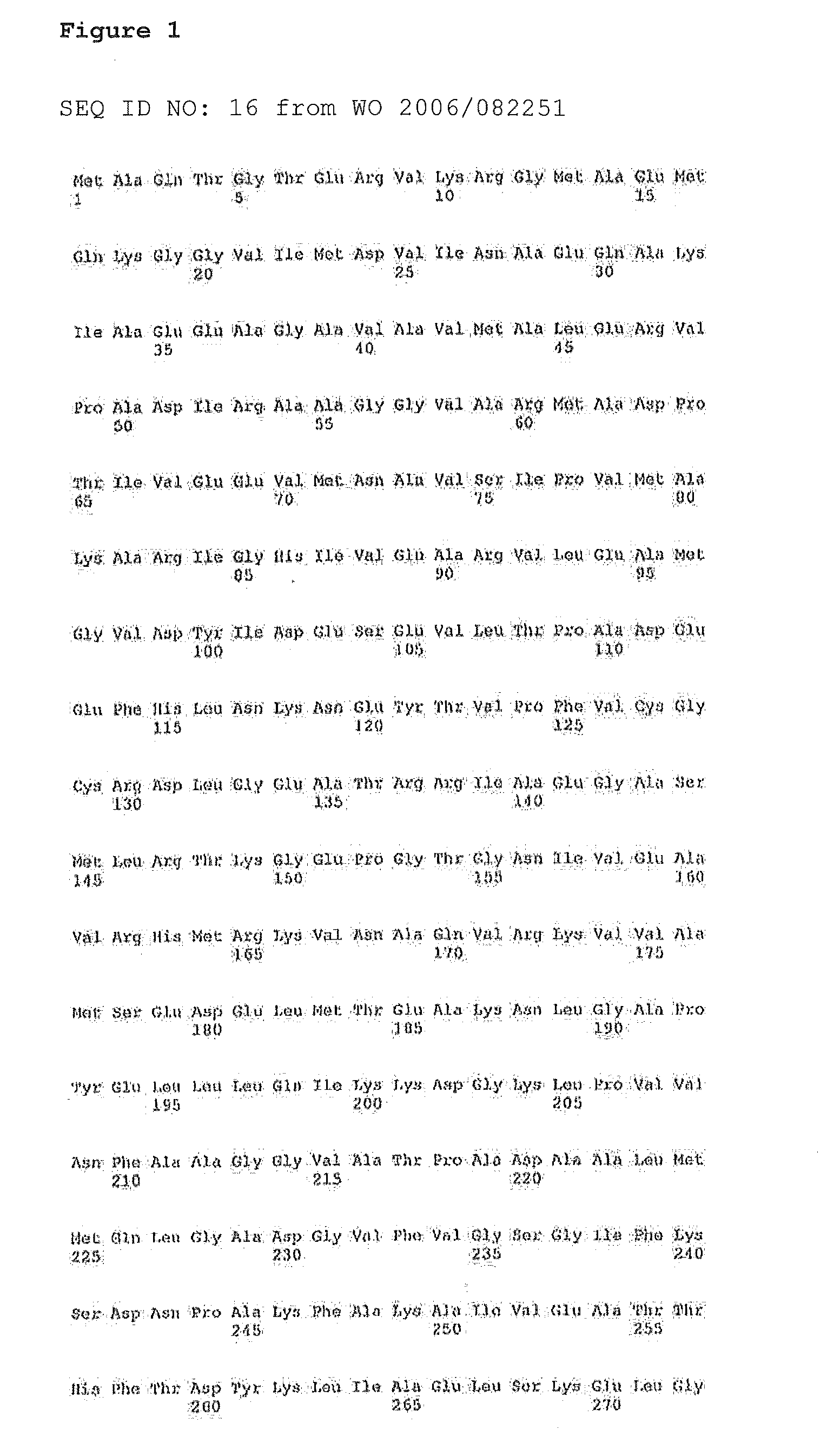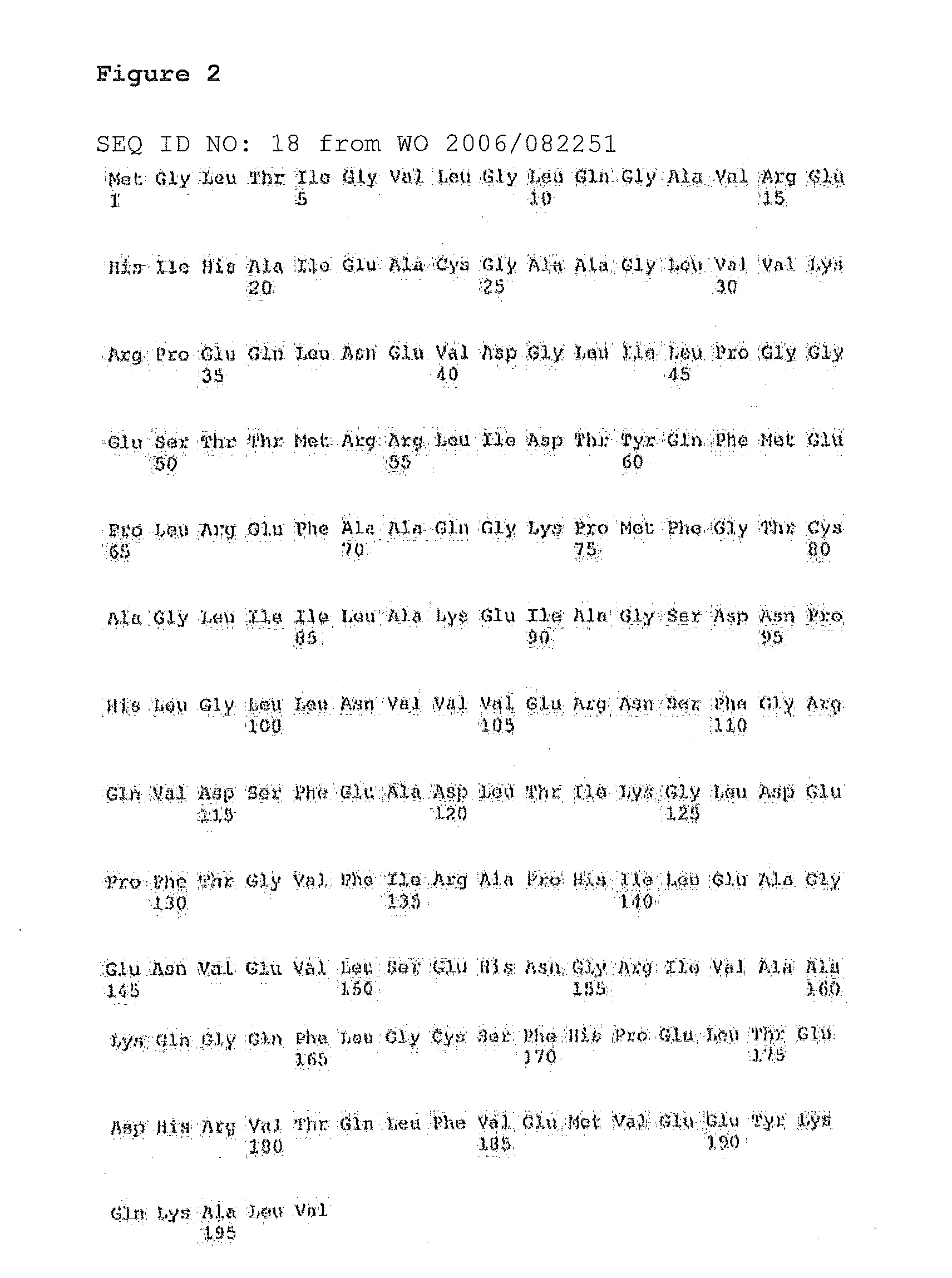Use of hydrophobin as a spreading agent
a technology of hydrophobin and spreading agent, which is applied in the direction of biocide, peptides, organic chemistry, etc., can solve the problems of complex development of spreading cascades, long time, and marked smoothness, and achieves reduced or prevented skin, improved absorption and/or accumulation of other constituents, and improved absorption
- Summary
- Abstract
- Description
- Claims
- Application Information
AI Technical Summary
Benefits of technology
Problems solved by technology
Method used
Image
Examples
example 1
Binding to Skin 1 (Qualitative)
[0316]A visual qualitative test was developed in order to examine whether hydrophobin binds to skin.
Solutions Used:
[0317]Blocking solution: DIG Wash+Buffer set 1585762 Boehringer MA (10× solution) diluted in TBS[0318]TBS: 20 mM Tris; 150 mM NaCl pH 7.5[0319]TTBS: TBS+0.05% Tween 20
[0320]The first step is the transfer of the external keratin layer from the skin onto a stable carrier. For this, a transparent adhesive strip was applied firmly to depilated human skin and removed again. The test can be carried out directly on the transparent adhesive strip or the adhering keratin layer can be transferred to a glass slide by sticking once again. The demonstration of binding was undertaken as follows:[0321]for incubation with the various reagents, transfer to a Falcon vessel[0322]optionally addition of ethanol for degreasing, removal of ethanol and drying of the slide[0323]incubation for 1 h at room temperature with blocking buffer[0324]washing for 2×5 min wi...
example 2
Binding to Skin 2 (Quantitative)
[0338]A quantitative test was developed which allows the skin binding strength of the hydrophobin to be compared with non-specific proteins (FIG. 2).
[0339]A 5 mm cork borer was used to bore out a section from a thawed dry piece of skin without hair (human or pig) (or in the case of a surface test a section of skin was inserted into a Falcon lid). The skin sample was then converted to a thickness of 2-3 mm in order to remove any tissue present. The skin sample was then transferred to an Eppendorf vessel (protein low-bind) in order to carry out the binding demonstration (see also FIG. 2):[0340]2× washing with PBS / 0.05% Tween 20[0341]addition of 1 ml of 1% BSA in PBS and incubation for 1 h at room temperature, gentle swinging movements (900 rpm)[0342]removal of the supernatant[0343]addition of 100 μg of hydrophobin in PBS+0.05% Tween 20; incubation for 2 h at room temperature and gentle swinging movements (900 rpm)[0344]removal'of the supernatant[0345]3×...
example 3
Binding to Hair (Quantitative)
[0355]In order to be able to demonstrate the binding strength of the hydrophobin to hair also compared to other proteins, a quantitative assay was developed (FIG. 2 in WO 2006 / 136607). In this test, hair was firstly incubated with hydrophobin and excess hydrophobin was washed off. An antibody-peroxidase conjugate was then coupled via the His tag of the hydrophobin. Non-bonded antibody-peroxidase conjugate was washed off again. The bonded antibody-peroxidase conjugate [Monoclonal AntipolyHistidine Peroxidase Conjugate, produced in mouse, lyophilized powder, Sigma] can convert a colorless substrate (TMB) to a colored product, which is measured phometrically at 405 nm. The intensity of the absorption indicates the amount of bonded hydrophobin or comparison protein. The comparison protein selected was e.g. yaad from B. subtilis, which likewise had—as is necessary for this test—a His tag for detection. Instead of the His tag it is also possible to use other ...
PUM
| Property | Measurement | Unit |
|---|---|---|
| concentration | aaaaa | aaaaa |
| composition | aaaaa | aaaaa |
| spreadability | aaaaa | aaaaa |
Abstract
Description
Claims
Application Information
 Login to View More
Login to View More - R&D
- Intellectual Property
- Life Sciences
- Materials
- Tech Scout
- Unparalleled Data Quality
- Higher Quality Content
- 60% Fewer Hallucinations
Browse by: Latest US Patents, China's latest patents, Technical Efficacy Thesaurus, Application Domain, Technology Topic, Popular Technical Reports.
© 2025 PatSnap. All rights reserved.Legal|Privacy policy|Modern Slavery Act Transparency Statement|Sitemap|About US| Contact US: help@patsnap.com



